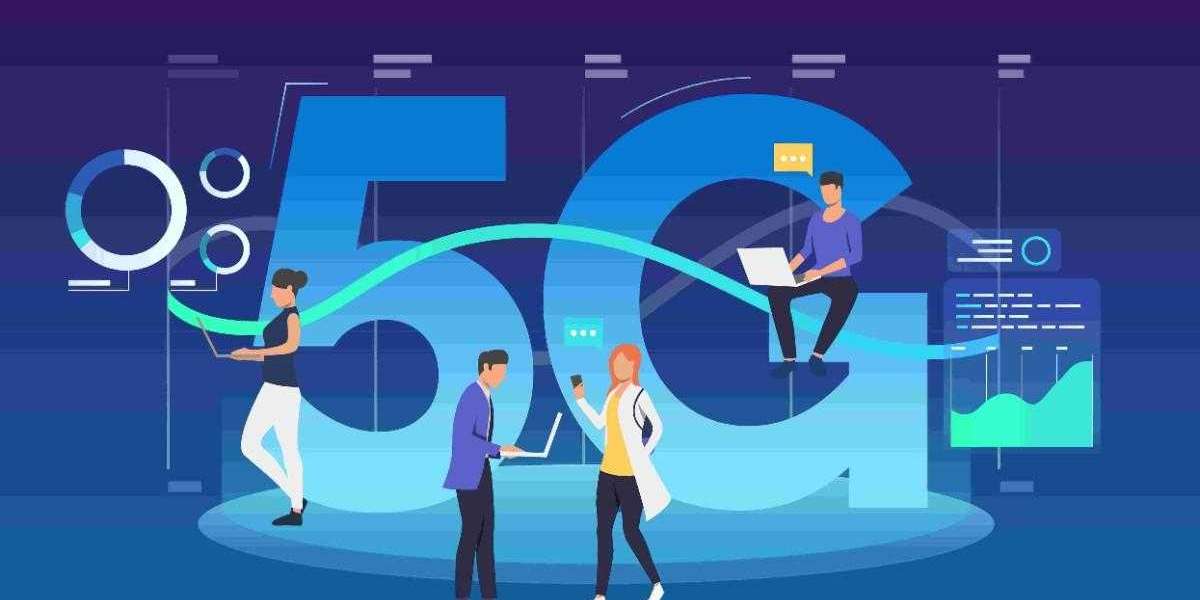The transition to 5G networks marks a monumental leap forward in the realm of digital communication. As the fifth generation of mobile networks, 5G is not just an incremental upgrade from 4G; it represents a revolutionary shift that will redefine how we interact with technology. From enabling smarter cities to revolutionizing industries like healthcare, transportation, and entertainment, 5G is set to transform the world as we know it.
In this writing, we’ll explore the advanced and futuristic implications of 5G networks across various sectors, delving into how this technology will change our everyday lives and reshape entire industries.
The Evolution of Mobile Networks: A Prelude to 5G
Before diving into the capabilities of 5G, it’s important to understand the journey that brought us here. Each generation of mobile networks has introduced new capabilities:
- 1G brought basic analog voice communication.
- 2G introduced digital voice and SMS.
- 3G enabled mobile data and internet access.
- 4G revolutionized mobile internet with faster speeds and low latency, paving the way for streaming services and mobile apps.
Now, 5G is set to exceed all previous generations with speeds up to 100 times faster than 4G, ultra-low latency, and the ability to support a massive number of connected devices simultaneously.
Core Benefits of 5G: More Than Just Speed
Unmatched Speed and Bandwidth
5G is synonymous with speed. With potential download speeds of up to 10 Gbps, 5G will allow users to download entire movies in seconds, stream high-definition content without buffering, and seamlessly interact with cloud-based applications. The increased bandwidth will also support more devices per square kilometer, ensuring that densely populated areas maintain high network performance.
Ultra-Low Latency
Latency is the time it takes for data to travel from one point to another. While 4G networks have a latency of around 50 milliseconds, 5G aims to reduce this to as low as 1 millisecond. This ultra-low latency is crucial for applications that require real-time responsiveness, such as autonomous vehicles, remote surgery, and virtual reality experiences.
Massive Connectivity: The IoT Revolution
One of the most significant advantages of 5G is its ability to support up to a million devices per square kilometer. This is critical for the Internet of Things (IoT), where billions of connected devices — from smart home gadgets to industrial sensors — will need to communicate simultaneously. 5G’s enhanced connectivity will drive the next wave of innovation across industries, leading to smarter cities, automated factories, and more.
The Transformative Impact of 5G on Key Industries
Companies Thriving in the 5G Era: Driving Innovation and Growth
As 5G technology becomes more widespread, software development companies are seizing the opportunity to innovate and grow. Leading tech giants and startups alike are developing new products and services that leverage 5G's capabilities, from advanced AI-driven applications to IoT solutions that transform everyday operations. For instance, telecom companies are rolling out 5G networks at unprecedented speeds, while automotive manufacturers are investing in autonomous vehicle technology that relies on ultra-low latency communication. Retailers are enhancing customer experiences with AR and VR, creating more engaging and personalized shopping environments. Additionally, industries such as healthcare, manufacturing, and entertainment are witnessing significant advancements, as software development companies adopt 5G to enhance efficiency, reduce costs, and offer cutting-edge services. The growth fueled by 5G is not just about faster internet—it’s about transforming business models, creating new revenue streams, and positioning companies at the forefront of the digital revolution.
1. Healthcare: Pioneering Remote Medicine
5G will revolutionize healthcare by enabling real-time, high-definition telemedicine, remote surgery, and advanced wearable devices. Doctors will be able to perform surgeries remotely with robotic arms, guided by high-speed video feeds that provide instant feedback. This will make specialized care more accessible, particularly in remote or underserved areas.
Wearable devices will also benefit from 5G’s capabilities, providing continuous monitoring of patients’ vital signs and delivering data to healthcare providers in real-time. This will improve patient outcomes through early detection of health issues and more personalized treatment plans.
2. Transportation: Driving the Future with Autonomous Vehicles
The transportation industry is on the cusp of a major transformation, with 5G playing a key role in the development of autonomous vehicles. These vehicles rely on real-time data to navigate safely and efficiently. With 5G’s low latency and high reliability, autonomous cars will be able to communicate with each other and with traffic infrastructure instantly, reducing accidents and optimizing traffic flow.
Moreover, 5G will enable the development of smart cities, where traffic lights, parking meters, and public transportation systems are all interconnected, leading to more efficient and sustainable urban environments.
3. Entertainment: Immersive Experiences on the Horizon
The entertainment industry will be one of the biggest beneficiaries of 5G. The ultra-high-speed and low-latency capabilities of 5G will make it possible to deliver immersive virtual reality (VR) and augmented reality (AR) experiences. Imagine watching a sports game in VR, where you can choose your viewpoint and feel like you’re right in the stadium, or participating in an AR-based interactive concert with thousands of other fans, all in real-time.
Additionally, 5G will revolutionize content delivery, enabling instant streaming of 4K and 8K videos, interactive live broadcasts, and more personalized entertainment experiences based on real-time data analytics.
4. Manufacturing: The Smart Factory of the Future
5G will drive the next industrial revolution by enabling smart factories, where machines, robots, and sensors are interconnected and operate autonomously. These factories will leverage 5G’s low latency and massive connectivity to optimize production processes, reduce downtime, and increase overall efficiency.
Predictive maintenance will also become more effective, as real-time data from sensors will allow for the early detection of potential issues before they cause equipment failures. This will lead to significant cost savings and higher productivity.
5. Retail: A New Era of Shopping
The retail sector will undergo significant changes with 5G. In-store experiences will be enhanced with AR, where customers can virtually try on clothes or see how furniture looks in their homes. Smart shelves, powered by 5G, will provide real-time inventory data, ensuring that popular products are always in stock.
Online shopping will also benefit, with faster load times, seamless mobile payments, and personalized recommendations based on real-time data. Retailers will be able to engage customers in new and innovative ways, creating more personalized and satisfying shopping experiences.
6. Agriculture: Smart Farming and Precision Agriculture
Agriculture will become more efficient and sustainable with 5G-enabled smart farming. IoT sensors placed in fields can monitor soil conditions, crop health, and weather patterns in real-time, allowing farmers to make data-driven decisions that maximize yield and reduce waste.
Drones equipped with 5G connectivity will be able to survey large areas of farmland, identify issues like pest infestations or water shortages, and take action immediately. This level of precision agriculture will lead to higher crop yields and more sustainable farming practices.
The Future of IoT with 5G
A New Era of Connected Devices
5G will unlock the full potential of the Internet of Things (IoT), enabling a new era of connected devices. From smart homes and cities to connected vehicles and industrial machinery, 5G will provide the infrastructure needed to support billions of devices, all communicating and sharing data in real-time.
Smart Cities: Building the Urban Environment of Tomorrow
5G will be the backbone of smart cities, where IoT devices and sensors are used to manage infrastructure, reduce energy consumption, and improve public services. In a smart city, 5G-connected sensors can monitor air quality, traffic flow, and energy usage, allowing city officials to make data-driven decisions that enhance sustainability and quality of life.
Challenges and Considerations for 5G Adoption
While the potential of 5G is immense, there are challenges to its widespread adoption. The deployment of 5G networks requires significant investment in infrastructure, including the installation of new base stations and fiber optic cables. There are also concerns about security and privacy, as the increased connectivity and data transmission create new vulnerabilities.
Conclusion
The 5G Revolution is Here
The rollout of 5G networks marks the beginning of a new era in technology, one that promises to change the way we live, work, and interact with the world. With its unmatched speed, ultra-low latency, and massive connectivity, 5G will drive innovation across industries and create new possibilities that were once thought to be science fiction.
As we embrace the 5G revolution, it’s important to consider both the opportunities and challenges that lie ahead. By addressing these challenges and investing in the necessary infrastructure, we can unlock the full potential of 5G and create a more connected, efficient, and innovative future.
The future of technology is here, and it’s powered by 5G. The only question is, are you ready for it?








